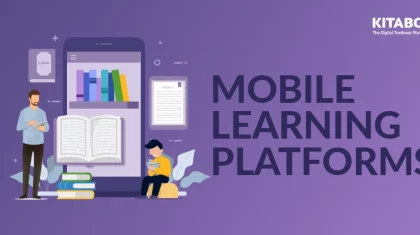
How Does AI Grading for Teachers Improve Accuracy and Consistency?
Summarize this blog with your favorite AI:
In a 2025 study, 50% of teachers reported that they experienced extreme levels of stress. One statistic alone spells out the stressors that weigh on educators outside of grading, which is an unrelenting addition.
There will be a pile of papers on the teacher’s desk, making giving suitable and timely feedback to every student impossible. This stress leads to burnout in the teachers and makes them unable to focus on differentiated instruction for an effective learning atmosphere.
That’s where AI grading for teachers becomes significant. Here is a technology that could really transform the classroom. This is achievable through simplifying the process of assessments, improving the accuracy of scores, and thus unburdening the much-needed valuable time towards personalized instruction and student engagement.
Table of Contents:
I. The Challenges of Traditional Grading
II. The Rise of AI Grading Systems
III. Benefits of AI Grading for Teachers
IV. Implementing AI Grading Effectively
- Choosing the Right AI Grading Tool
- Training and Professional Development
- Ensuring Responsible and Ethical Use
V. Wrapping Up
The Challenges of Traditional Grading
Traditional grading methods create many problems for teachers. Such challenges exemplify the need for innovative solutions to make the grading process more efficient and fair, allowing teachers to deal with the learning and welfare of students.
- Subjectivity and Bias
Human grading is bound to be subjective. Teacher mood, personal biases, and even the time of day can unconsciously influence grading decisions. This leads to inconsistencies and unfairness, where similar work receives vastly different scores from different teachers or even from the same teacher at other times.
- Timing Issues
It also puts a constraint on time due to the immense volume of grading, especially with large class sizes. The stress of grading assignment after assignment rapidly and accurately creates burnout and can affect the morale of teachers.
- Inconsistency in Performance
Grading may differ within the same class. Such inconsistency can be detrimental to a student’s learning experience.
Students will have no idea what exactly is expected of them, and the effort and motivation they manage to put into a piece of work might still be dampened by a skewed and indiscriminate grading process.
The Rise of AI Grading Systems
An AI grading system is emerging as a great tool for instructors. They use AI algorithms to review work completed by the students, which could be essays, assignments, or quizzes.
For example, it can automatically find grammatical errors, including subject-verb agreement and punctuation, and can even identify plagiarism by cross-referencing against a vast online database of materials.
Enhancing Grading Accuracy
By analyzing enormous student work datasets, AI algorithms can determine subtle patterns and trends that would not otherwise appear to human graders. An example would be the AI tools for teachers to see that a specific student tends to have problems in making strong thesis statements or building up supporting arguments.
This type of nuanced analysis can help minimize subjectivity and bias, leading to more accurate and consistent grading outcomes across different students and even across different teachers within a department.
Ensuring Consistent Feedback
It could provide students with immediate and consistent feedback on their work. Rather than just assigning a grade, AI can point to specific areas where improvement is necessary.
For example, an AI system can flag a sentence as being too wordy and provide more concise alternatives.
It will identify weak areas in an argumentative essay and make specific suggestions about strengthening the evidence or countering arguments. This feedback can help students better understand their strengths and weaknesses, making appropriate adjustments to the work in real time.
Benefits of AI Grading for Teachers
Instead of spending more hours grading assignments, teachers would have time for creative lesson planning, mentoring students one-on-one, and building better relationships with their students.
Here’s how AI grading can benefit the teacher:
Increased Efficiency and Productivity
Such automatic processing of time-consuming tasks provides great efficiency and productivity for AI grading for teachers. They have to spend less time on issues concerning instruction, student engagement, and other significant task areas.
Reduced Teacher Burnout
The repetitive task of grading can lead to burnout among teachers. AI will help reduce teacher workload and the risk of burnout by automating some grading tasks.
Enhanced Student Learning Outcomes
Providing immediate and personalized feedback can be one of how AI improves learning outcomes. Immediate feedback on a student’s work allows them to identify areas of improvement and adjust accordingly.
Implementing AI Grading Effectively
Open communication and collaboration between teachers, administrators, and students are vital for successful AI grading implementation and addressing any concerns or challenges that may arise.
It’s crucial to prioritize ethical considerations, such as data privacy, algorithmic bias, and the potential impact on student learning, throughout the AI grading implementation process:
Choosing the Right AI Grading Tool
Selecting the right AI grading tool is crucial for successful implementation. Educators should carefully evaluate different options, considering accuracy, reliability, ease of use, and cost.
Training and Professional Development
Teachers need good training and professional development to really make use of AI grading tools. This helps them understand the capabilities and limitations of the tool and ensures proper integration with their teaching styles.
Ensuring Responsible and Ethical Use
There is a need to ensure that AI grading tools are used ethically and equitably. Educators need to be sensitive to the possible biases in the AI algorithms and take appropriate measures to neutralize the impact on student learning.
Wrapping Up
The traditional grading process burdens educators heavily, consuming valuable time and hindering personalized instruction. The AI grading system has emerged as a powerful solution, offering many benefits for teachers and students alike. AI grading for teachers frees up teacher time, reduces stress levels, and allows for a more focused approach to education by automating routine tasks.
Personalization will define the future of education. KITABOO recognizes this and provides an extensive set of learning management tools to enable the educator while ensuring the personalized experience of every student.
Our digital textbook platform supports everything from AI-powered automated grading to creating interactive content. By obtaining insights from educational data for learners, we equip educators to take the greatest advantage of all things AI on campus. Reach the future in your lifetime. Contact us today.
Also Check:
Discover how a mobile-first training platform can help your organization.
KITABOO is a cloud-based platform to create, deliver & track mobile-first interactive training content.



